Breath of Fire IV: The Duality of the Dragons
Celebrating the remarkable, but flawed, classic RPG
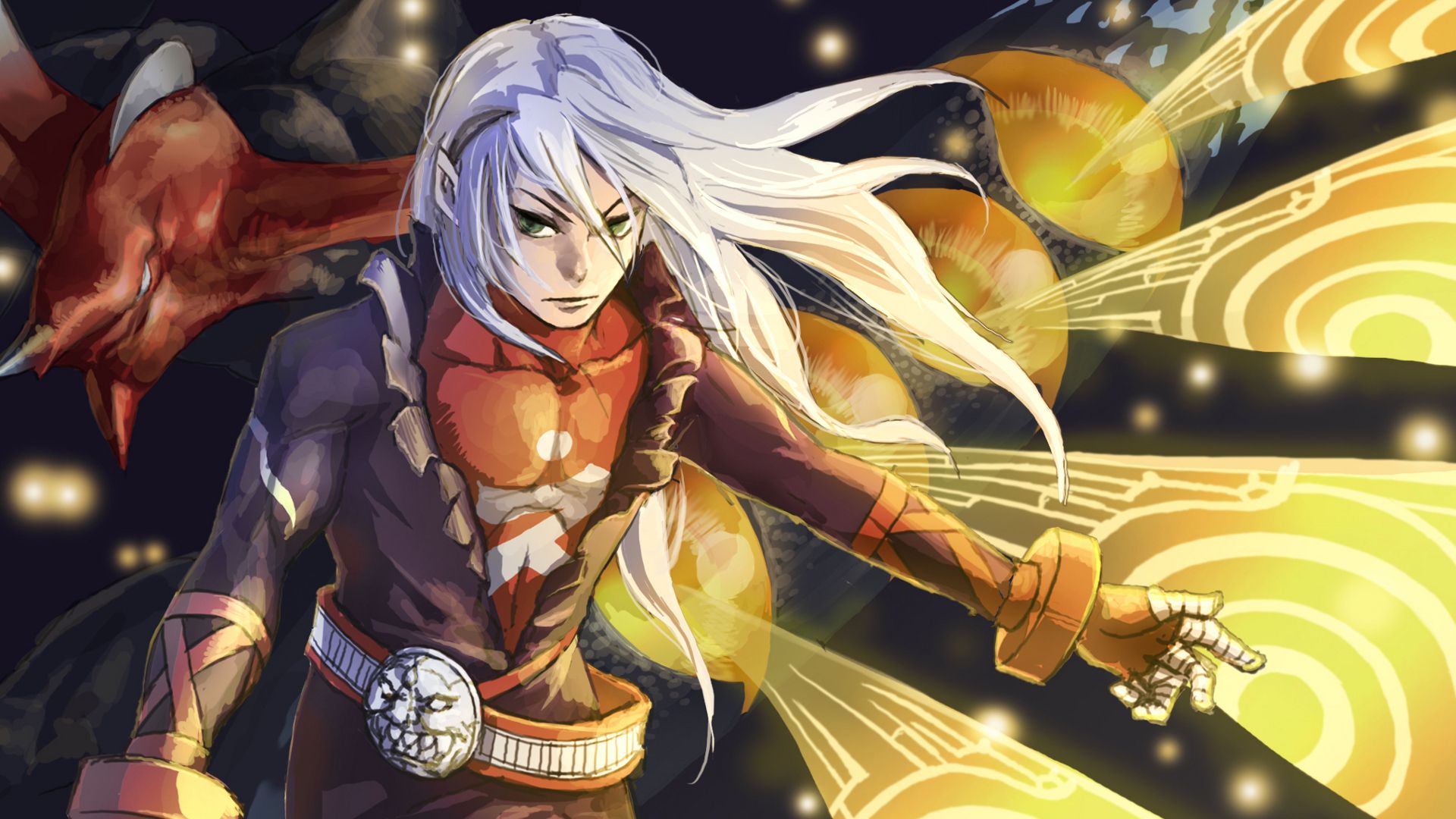
The Breath of Fire series celebrates its 30th anniversary this month. The entire franchise's existence is a fascinating topic. It was born in an era of experimentation, where Capcom wanted to create an RPG and try to get a share of the market. It was so different from today's era where the company puts its money on more famous IPs or invests in smaller projects where risks are lower.
Although the series origins date back to the SNES, with two entries that are considered just okay, the PS1 era was when Breath of Fire reached a new level. Breath of Fire III and Breath of Fire IV are both considered to be among the very best JRPGs in the library of the 32-bits console. Both introduce gameplay elements that helped the series elevate its success and distance itself from its rivals, as well as visuals that were praised by critics and fans alike, along with memorable narratives.
Today, let’s talk about the fourth adventure in the series. It's a title that is regarded as a landmark achievement of its era, with well-crafted visuals, a unique story that is well-remembered thanks to its charismatic villain, and a fun and interesting gameplay mechanic that we don’t see in many games of its genre. Breath of Fire IV is considered by many as the last hurrah for the franchise, and it well deserved this praise.
Crafting a piece of art
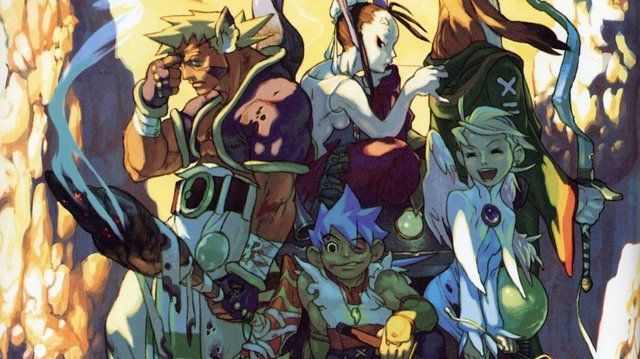
Breath of Fire IV was released on April 27, 2000 in Japan. Finishing work in Breath of Fire III, series scenario writer Makoto Ikehara started to draft ideas for the game's plot. Although the narrative was written early, the game development encountered numerous hardships. Capcom Production Studio 3, founded after the production of Breath of Fire III, was the studio responsible for the title.
Development only started after work was done in Resident Evil 3: Nemesis, in 1999. With a proposed release date of 2000, there was little time to be able to put all the ideas necessary into the final product, with some plot points remaining unfinished. But at the same time, Capcom Production Studio 3 also invested time and effort in crafting something that would be unique even among its peers in the PS1 era.
During the original PlayStation days, Final Fantasy was king when it came to JRPGs. The seventh title in the legendary franchise brought polygons to the genre, refined gameplay elements presented in past titles, and offered an impactful narrative that conquered the hearts of millions of people around the globe. While Final Fantasy VIII didn't reach the same peak as its predecessor, Square amazed everyone with its impressive graphics and presentation, bringing a movie-like experience to owners of the 32-bits console. By 2000, Final Fantasy IX was one of JRPG fans' most-anticipated games.
While Square jumped right into the 3D world, other rivals were a little more hesitant to make the jump. Dragon Quest, Final Fantasy's main rival during the ’90s, missed most of the generation; when Dragon Quest VII finally came out, it still utilized 2D visuals, although in a mix with 3D backgrounds. The newly created Tales series was another that decided to keep using 2D graphics.
Creating a world from nothing: The amazing visuals of Breath of Fire IV
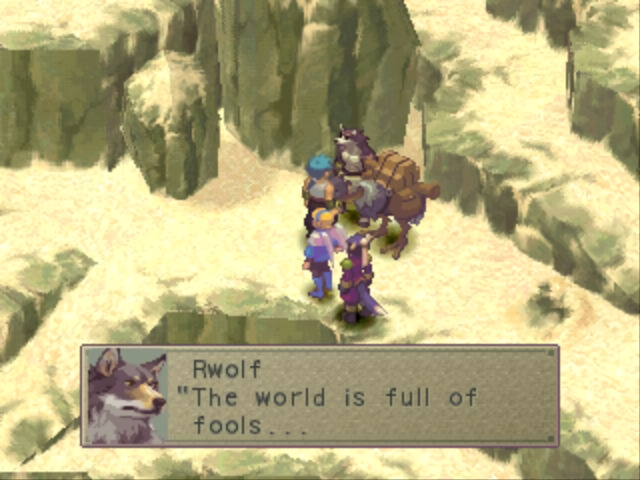
The PlayStation era saw a transition in visual quality compared to anything else that came before. The 3D graphics presented by the console allowed for new possibilities for the developers who mastered the techniques required to produce it. While almost every dev jumped to the new graphical style, some like Capcom, keep doing 2D games as a safeguard in case their 3D projects didn’t go well with the public.
Capcom was second to none when it came to 2D sprite work, with many of its arcade titles, such as the Street Fighter series, being widely regarded for its amazing sprite work. On the console front, Mega Man 8 was a bright and colorful demonstration of PlayStation and Saturn hardware mastery, delivering charming sprites and fluid animation the likes of which had not been seen before.
At the same time, Capcom got its feet wet developing 3D games as a test for the future. In 1996, their first project in this new world was a success, with the original Resident Evil becoming a huge hit; this resulted in a change inside the company. 2D was out, 3D was in.
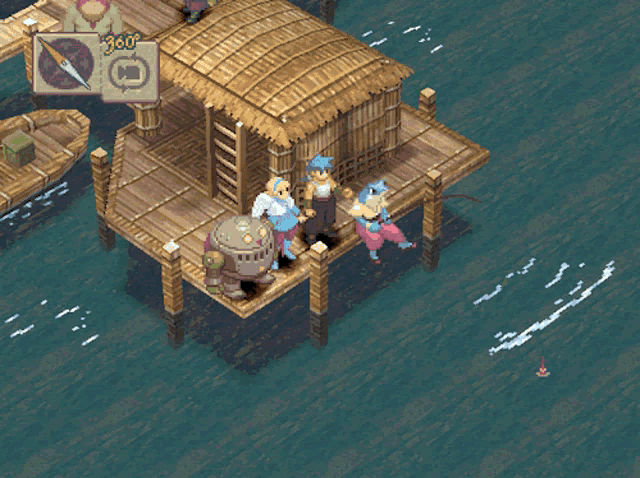
Even so, there was still a small hint of resistance inside the company. Before the art of sprite work was lost to time (at least until modern indie developers), there were still fans of it who thought they could do more. Capcom’s JRPG series, one which never received the necessary funds to truly shine, was the perfect candidate for a last hurrah before Capcom changed gears and fully committed to 3D graphics.
With artwork created by the series veteran Tatsuya Yoshikawa, Breath of Fire IV pushed the Sprite team at Capcom to its limits. The world was crafted piece by piece using an art style that combined fluid detailed sprites with 3D environments, with a special shade to make things look even more crisp and beautiful.
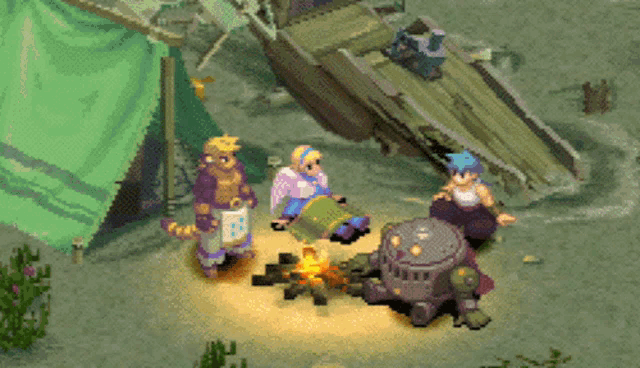
The planar shading techniques utilized by Breath of Fire IV were a huge change in construction compared to contemporaries. It was a subtle change but enough to demonstrate both complexity and simplicity, offering a different perspective to what could otherwise be considered a dull-looking game.
Breath of Fire IV was a darker game than its predecessors. The world entire world was a desert where two continents were in a full-scale war till a few years before the game started. There are scars of the war everywhere, and few areas where trees (or any kind of greenery) exist. The artists used visual design to help immerse players in this world. With a color palette full of earthly tones, the clever use of contrasts between warm and cool themes made for a unique world that is well remembered by those who played.
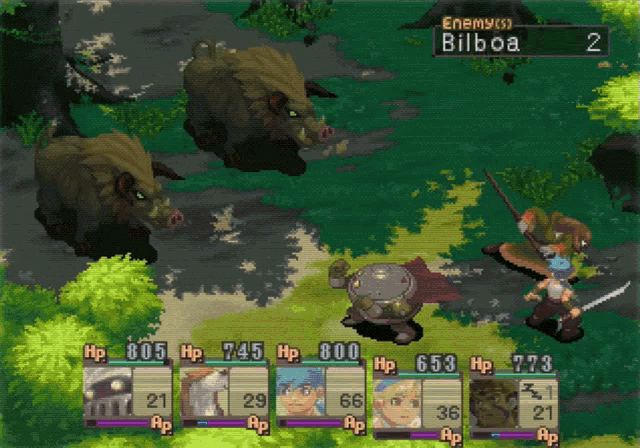
In motion, things look even better. Perhaps this is one of Capcom’s most fluid games available in the PlayStation library. With a mix of shading and other techniques, as well as an impressive number of hand-drawn frames for each action, Breath of Fire IV was Capcom at its best, and visually it’s one of the best-looking JRPGs in the market. A true testimony to an era.
Giving life to the world: The soundtrack
Just like the graphics, the soundtrack of Breath of Fire IV was created with the game world in mind. The Asian influences arising from the narrative were also an important point when it came to developing the music that would be played during the game. The composers for the title were Yoshino Aoki and Taro Iwashiro, both had previous experience in the series, as well as other Capcom games.
While Yoshino Aoki was inspired by jazz when creating the soundtrack for Breath of Fire III, for IV, the composer decided to leverage an Eastern influence. Utilizing different instruments, the musician decided to separate the soundtrack into two parts, each one focused on one of the continents presented during the narrative, as well as the dual protagonists of the story.
No better example can be shown than the battle themes heard during the game. “It's An Easy Win”, the first battle theme, is introduced right at the start and serves as Ryu and his friend's theme during combat. It’s an upbeat song with instruments that increase in tempo and pitch during certain moments, inspiring players to take it easy and learn the combat. It’s a theme that can be interpreted as our heroes being new to the adventure and taking it easy, enjoying things as they go along.
Then right when we take control of Fou-lu we are introduced to “Men of War”, his battle theme. Utilizing more Asian instruments in its composition, the theme reflects Fou-Lu's personality as well as his appearance. It’s a calm melody that has a few strong notes spread across its length. It’s the opposite of “It’s An Easy Win”, as it's a theme that reflects strength and focus. Later in the game, when Ryu returns to the same areas as Fou-Lu and this becomes the standard battle theme, the circle is complete, and the party is powered up and focused on the matter at hand.
This duality, also seen within the narrative itself, is an important point that affects the Breath of Fire IV's soundtrack. Of course, this is more notable when we compare battle themes between the protagonists, though other themes explore this division very effectively. “Beginnings and Endings”, one of the variations of Breath of Fire IV's main theme, is another perfect example. With a marvelous melody guided by a flute, it's a song that expresses sadness as well as peace, two themes that are interlinked together in the beautiful narrative.
What fan of Breath of Fire would I be if I didn't mention the fishing mini-game theme? Named “Tototon Tototon To”, it’s a calm melody created to help players invest in the mini-game itself. The song is used efficiently by the composer as well, with the bongos in the melody working as a tip to players to time their movements in the correct way to get a bigger fish.

The duality of the dragons
Although it's the fourth game in the series, Breath of Fire IV's narrative is standalone, being unrelated to those that came before it. With the Myria arc being closed in III, Makoto Ikehara looked to create a different storyline, taking the series in a new direction, one that could distance itself from its predecessor, but still retain some familiarity to veterans.
While past games were usually about the conflict between Ryu, a Dragon clan member, and an enemy that considers itself a god, raising questions about religious fanaticism and other topics. Breath of Fire IV was a much more philosophical narrative, delving into questions such as the nature of mankind, morality and what exactly is a god.
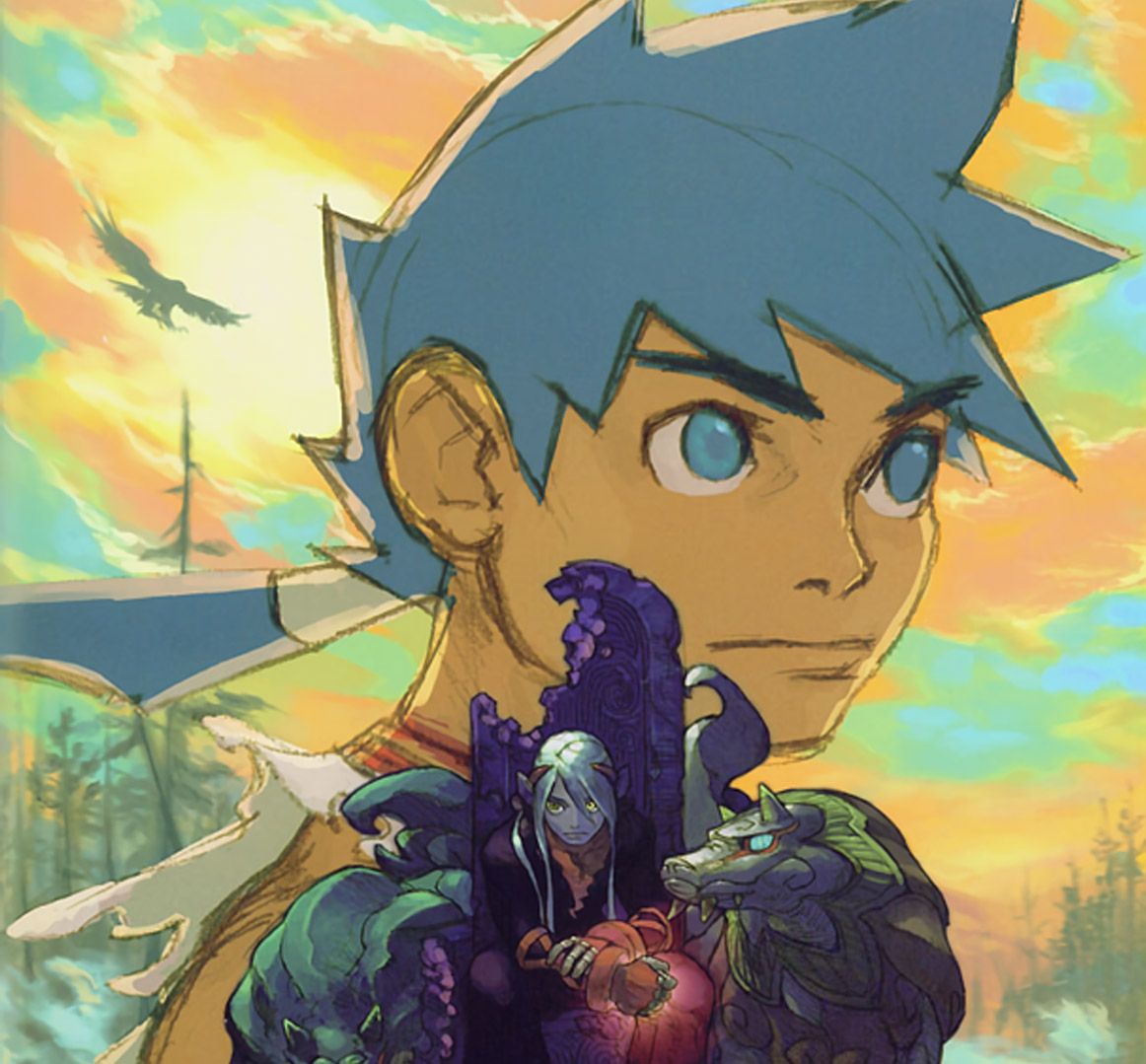
Unique to this game was the fact that the narrative was shared between two protagonists. The more traditional “hero” Ryu, a young mysterious blue-haired man with no memories of the past, and Fou-Lu, an immortal emperor reawakened after millennia and ready to take back his throne.
Both Ryu and Fou-Lu are the halves of a god, the Yorae Dragon, the most powerful Endless in existence. We are introduced to the Endless for the first time in Breath of Fire IV; these are powerful creatures, summoned from other worlds to become gods. The process that summoned Yorae was a failed one, with him being split in two, separated not only in body and soul but time as well.
Millennia before the start of the story, Fou-Lu was summoned to the world and asked to help settle a war. Fou-Lu solved the problem quickly and established the Fou Empire. Knowing he was still incomplete, Fou-Lu made the emperor swear a promise of returning the throne when he returned and afterward entered a slumber waiting for the day his other half would come to this world.
Coming to the present day, Nina, princess of the Wyndia kingdom in the eastern continent is traveling searching for her sister who went missing during a diplomatic mission. The Fou Empire in the western continent and the countries in the east were in a cruel and savage war for years 'till a ceasefire pact was signed. With tensions still high, the princess and her companion, Cray, chief of the Woren Tribe, were the only ones who decided to search for the missing sister.

Their travels are cut short as their sandlfyer, a ship that travels the sands, is attacked by a dragon. Nina decides to go to the closest city in search of parts, while Cray stays and guards the sandflyer. Shortly afterward, Nina ends up finding a dragon who turns into a boy with no memories of his past except his name, Ryu. Soon after, Fou-Lu awakes from his slumber and goes right back to his empire, ready to take over and rule the world as a god.
Afterward, the game jumps back and forth between the two protagonists. As Ryu, we meet new friends, learn more about the world and see the hardships and struggles of humanity, as well as their kindness and how they are trying to overcome their past mistakes. While as Fou-Lu, we are shown the worst of humanity, being hunted down by the descendants of those who he saved in the past. Cruel acts happen during Fou-Lu narrative and we as Players are so involved, it's hard not to agree with the God Emperor at the end of the game when he asks Ryu to join him and destroy all the mortals.
Although Ryu's narrative takes a while to pick it up, the first part of the game focuses more on Nina searching for her sister, when it's revealed that Ryu is an Endless, things change drastically. We see the party struggling at first, questioning what they could do against a god or if it’s even right that they try to interfere, but as they continue to travel together, events happen, such as Nina's sister being revealed to be transformed into a monster by Yuna, a man who wish to create his own gods, we start to see a more gray narrative which leads magnificently to the ending with its question.
“Who was right at the end?”
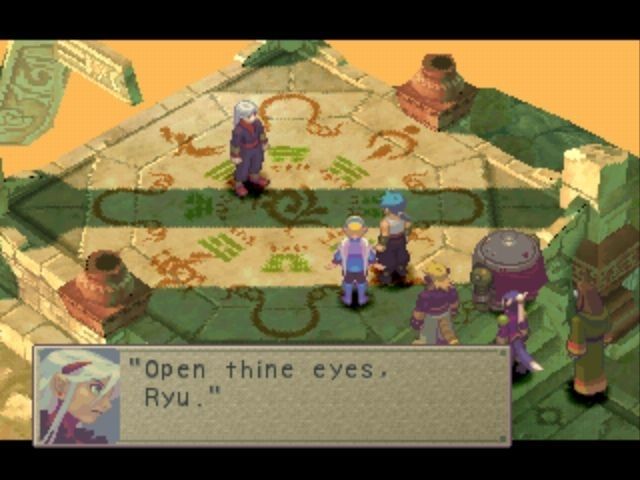
When Ryu and Fou-Lu finally meet face to face, events are already set in specific motion. Fou-Lu, driven by rage and madness, infiltrates the Fou Empire, kills its emperor in a cold-blooded fashion after the man stabbed him, and starts to attack its citizens. Tired of mortals, the God Emperor waits for Ryu's arrival to become one and unleash his fury in the world.
Meanwhile, Ryu is coming to the empire with his friends. He experienced firsthand what the mortals lead, he saw their sadness and their happiness, he saw atrocities committed by those who had power, but he also saw kindness and forgiveness even after all is said and done. Two of the party members were even enemies at one point, and the group forgave them. Ryu stands with the mortals; he knows they aren’t perfect, but he believes in them and the future they might achieve.
So, after a small clash between both sides, Fou-Lu decides to explain his reasons for hating mortals to Ryu and directly asks Ryu to join him. At this point, both sides have a clear obvious preference, but the decision is left up to the player. They can accept Fou-Lu's ideals and agree that mortals are dangerous, being assimilated by the God Emperor, becoming the Yorae Dragon and unleashing its fury into the world, fighting your party in the process of what is a hopeless boss fight for them. Or the player can reject Fou-Lu and fight with his full party against the God Emperor to protect everyone.
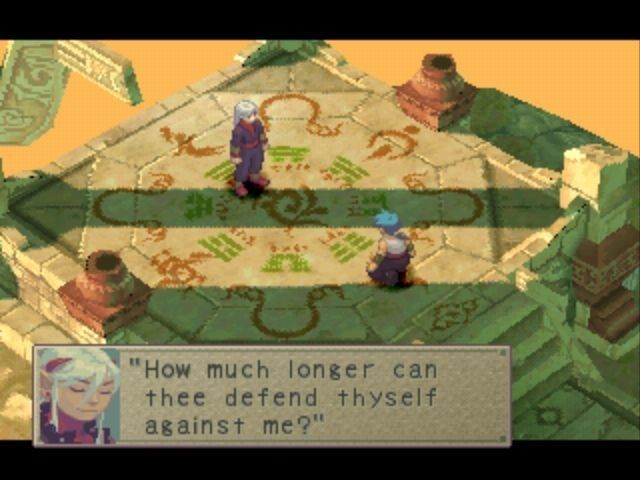
It's an amazing way to end the game, and it's made brilliant when you analyze it and notice that there is no strictly correct answer to who was right. Both Fou-Lu and the party presented solid arguments in defense of their views, however, each side had one point in their narrative where their views were compromised, and that is when the ending choice shines through most. There were no heroes or villains, just two sides with clashing views, and the one who didn't falter won in the end.
Unfortunately, the "good" ending was a bit rushed, given the challenging development process. Yuna, one of the most obvious bad guys in the narrative, escaped free from their crimes, with him declaring that he will start to create new gods. Still, some players felt that this ending had its charm, showing that even if the decision made was the better outcome, there would still be some of the problems alerted by Fou-Lu.
The dragons of Ying and Yang
Breath of Fire IV's narrative had some inspiration from Eastern cultural philosophies, perhaps the most obvious one being the Ying and Yang. Being half parts of the same od, Ryu and Fou-Lu are the opposite of each other in more than their simple views of the world. This is one of the main points of the narrative as a whole. Ryu is weak, being recently “born” into this world with no memories or control over his power. He has to rely on people to help him during combat, gathering allies and getting stronger by learning from masters and gearing up. When it's revealed that he needs to meet Fou-Lu, he is directly told that he is weaker than the God Emperor and will probably be assimilated. Yet, Ryu or his friends give up, with him searching the world for the other Endless to give him power so he can face his other half and protect those he cares about.
Fou-Lu is the direct opposite. He’s strong and always stays alone. Random encounters with him are nothing more than mere annoyances, with his attacks being capable of obliterating any foe in his way in a few hits. Even when the party gets to the western continent, they still struggle to kill the foes there. Unlike Ryu, Fou-Lu doesn't make bonds with other people, is usually always on the run, and speaks very little.
This Ying and Yang philosophy also carries through to the gameplay. Ryu's main element is fire, while Fou-Lu is ice. While Fou-Lu dragons are unlocked together with Ryu, their skill sets are different. Fou-Lu also doesn't get any new gear, nor can he learn spells from enemies or masters. This integration of inspirations and philosophies in both narrative and gameplay is one of the main keys to Breath of Fire IV's masterful storytelling.
Fighting like a dragon
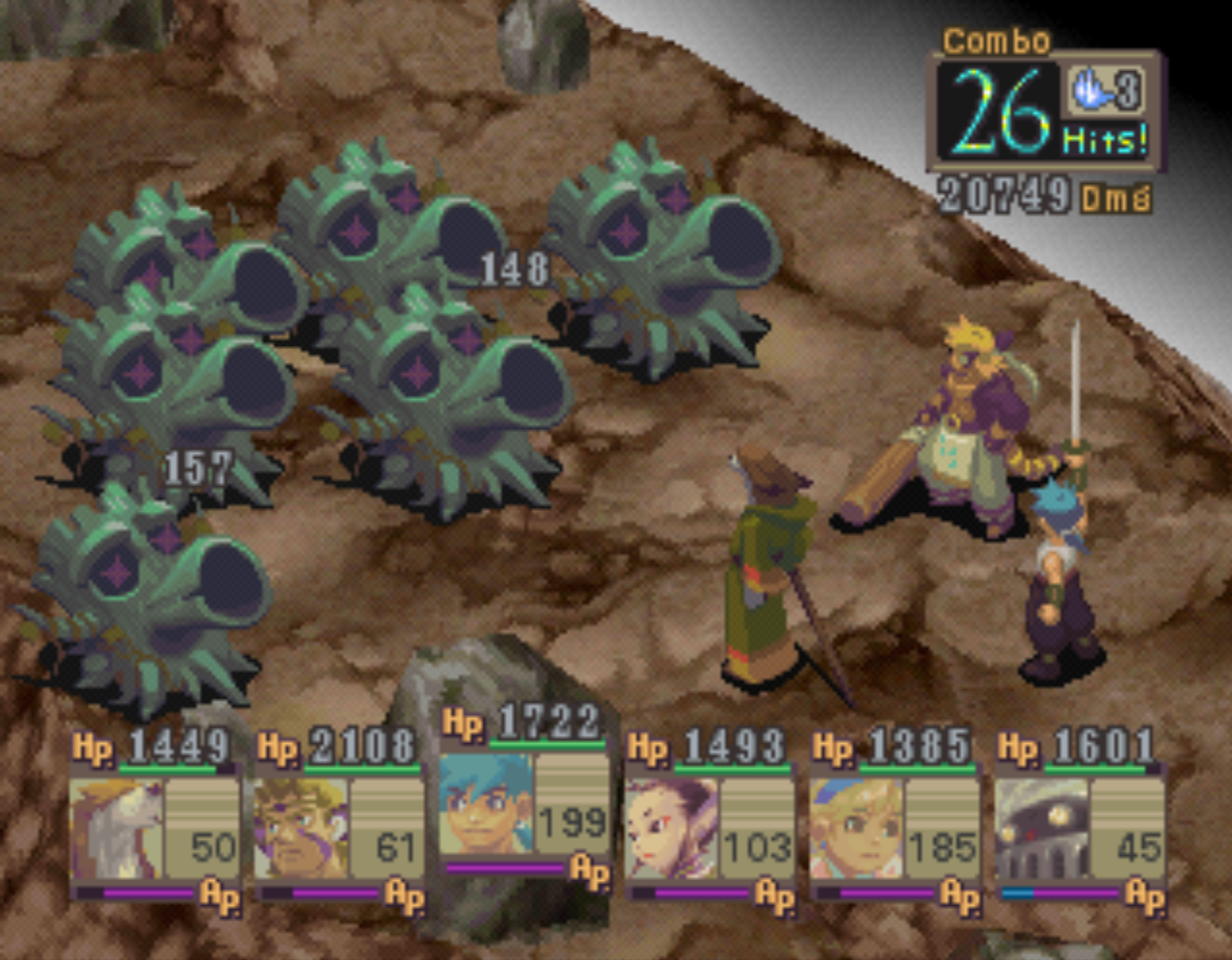
Breath of Fire IV is a turn-based JRPG that utilizes many mechanics found in similar titles of the genre. With a full party of six members, we have three serving as active in the frontline while the other three are in the backline, waiting to be called into action. Similar to what was available in the first game of the series, at any time during the duels, it's possible to swap a member for another, helping deal with threats while also keeping weaker members alive for the experience.
Following the series tradition, the dragon system returns, being changed once again to be more balanced. Gone is the fun gene system from Breath of Fire III, which allowed for different combinations of dragon types. In Breath of Fire IV, Ryu and Fou-Lu have a determined set of transformations, unlocked via the discovery of genes in the overworld. The transformation is now a full scene that mixes both 2D and 3D animation, and while the form assumed in combat is the same, it's during the breath attacks that we see the real dragons fully modeled in 3D realizing their attacks in a similar vein to the summons in Final Fantasy.
The one mechanic that distinguishes Breath of Fire IV from its peers is the combo system. Every time character uses a skill or magic, it's possible to start a combo, dealing extra damage or even casting more powerful magic. It’s a useful and fun mechanic, incentivizing experimenting with the different types of magics and skills to discover powerful spells and combinations.
The end of an era
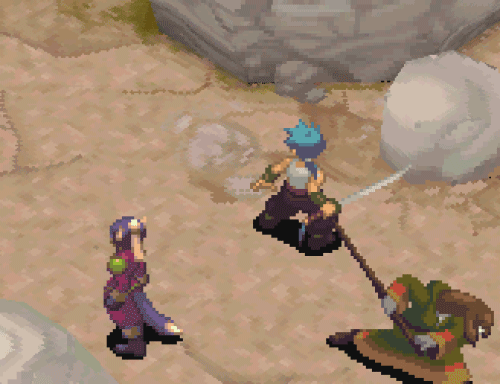
It’s almost impossible to believe that a game such as Breath of Fire IV would be released in today's era by Capcom. The game was masterfully crafted by its development team, with an amazing presentation and intriguing narrative presenting players with one of the most memorable experiences of its genre. The cracks, however, also make themselves present, with the rushed development and even rushed localization, leaving visible marks on its final product. For example, the Western version of Breath of Fire IV left its subtitle, Utsurowazaru Mono, still in Japanese in the main menu as well as having Japanese words in its ending slide.
Still, the game is an amazing example of its genre, a reminder of a different time when Capcom was more innovative and allowed projects other than its big three to shine through. The Breath of Fire series may have faded from view after this game, and the franchise might be dead, but its memory will never truly die.
Happy 30th Birthday, Breath of Fire. We hope that one day, your tale shines again and once more we can enjoy traveling alongside the Dragon Boy and Winged Princess.